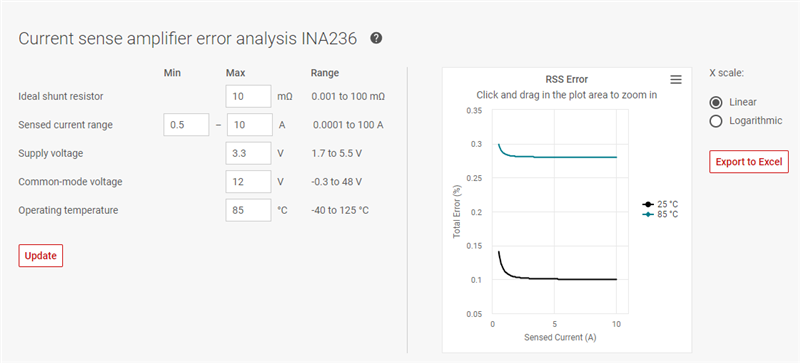Other Parts Discussed in Thread: INA231, INA228, INA229
team,
The customer raised some questions for application of INA231 and INA236. Would you please check and reply. Thanks
- For INA236 the Vsense is probed at the V- pin, for INA231, Vsense have a dedicate BUS pin, is it flexible to connect BUS pin to V-, V+ or other voltage point not connected to INA231?
- For INA236, the minimum current we could sense in light load is 5uV/Rsense? It could sense the current load which periodically change from 0~10uV/Rsense but with large error percentage?
- From the diagram below, is this mean that the current error could be 40uV/Rsense when the conversion time is set to 140us?



